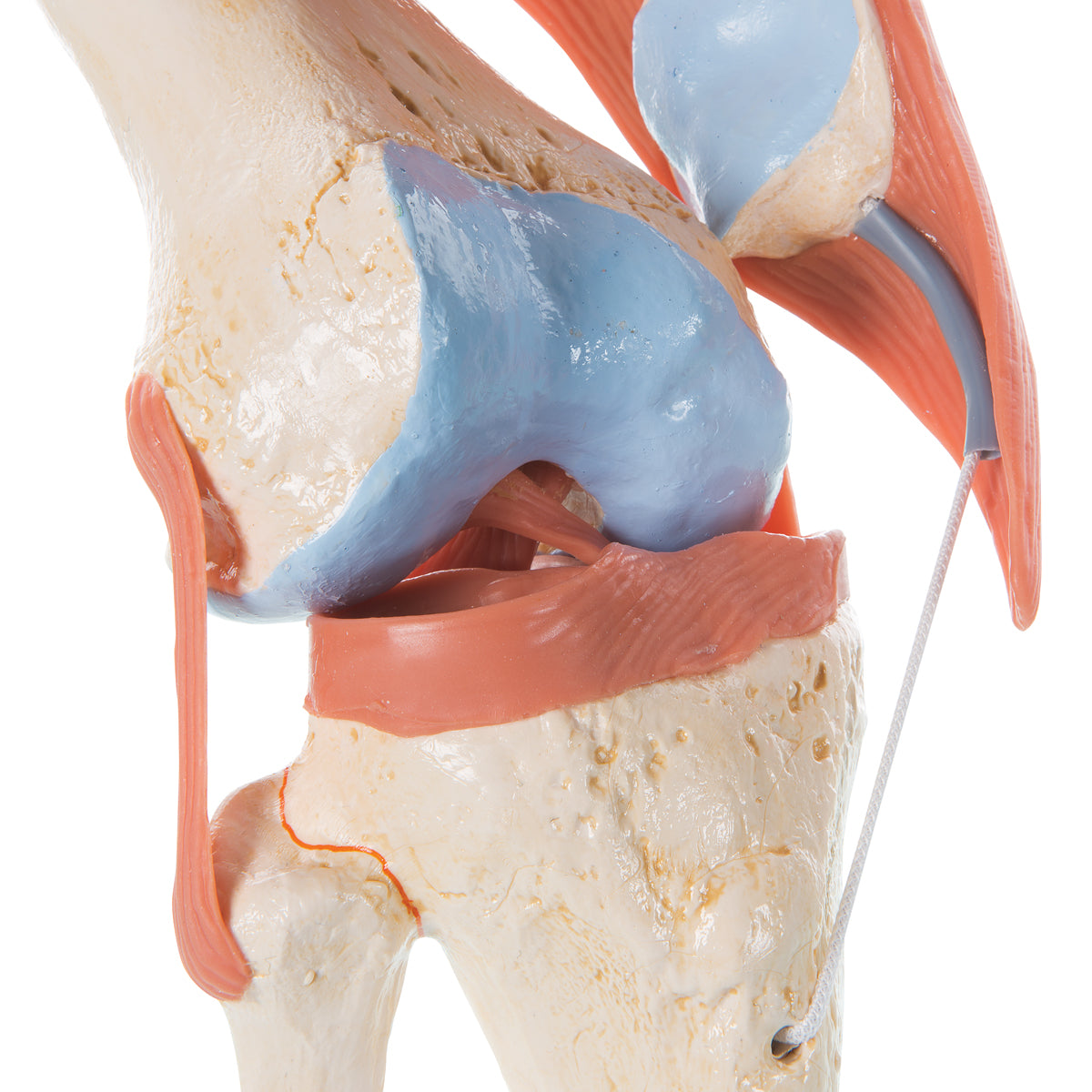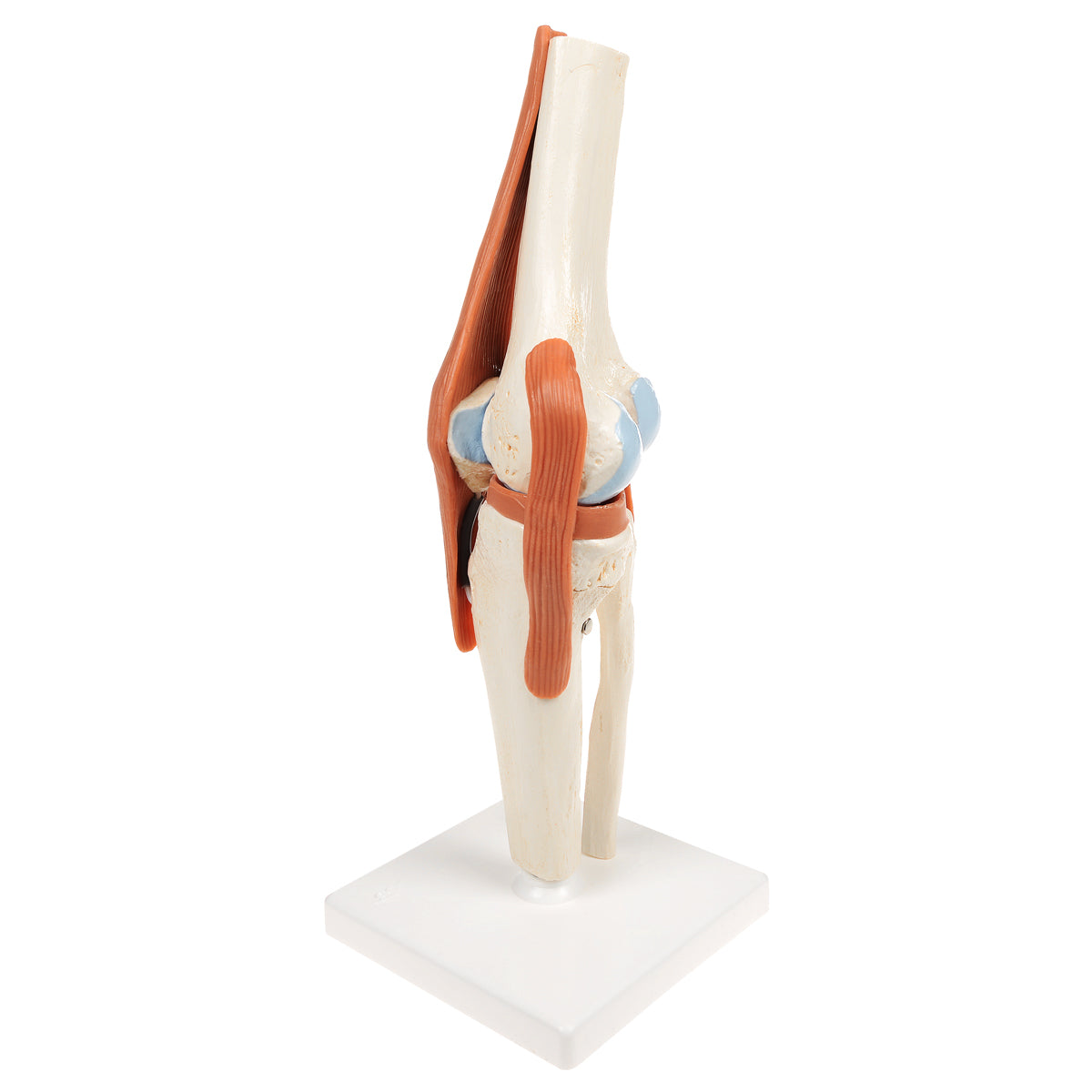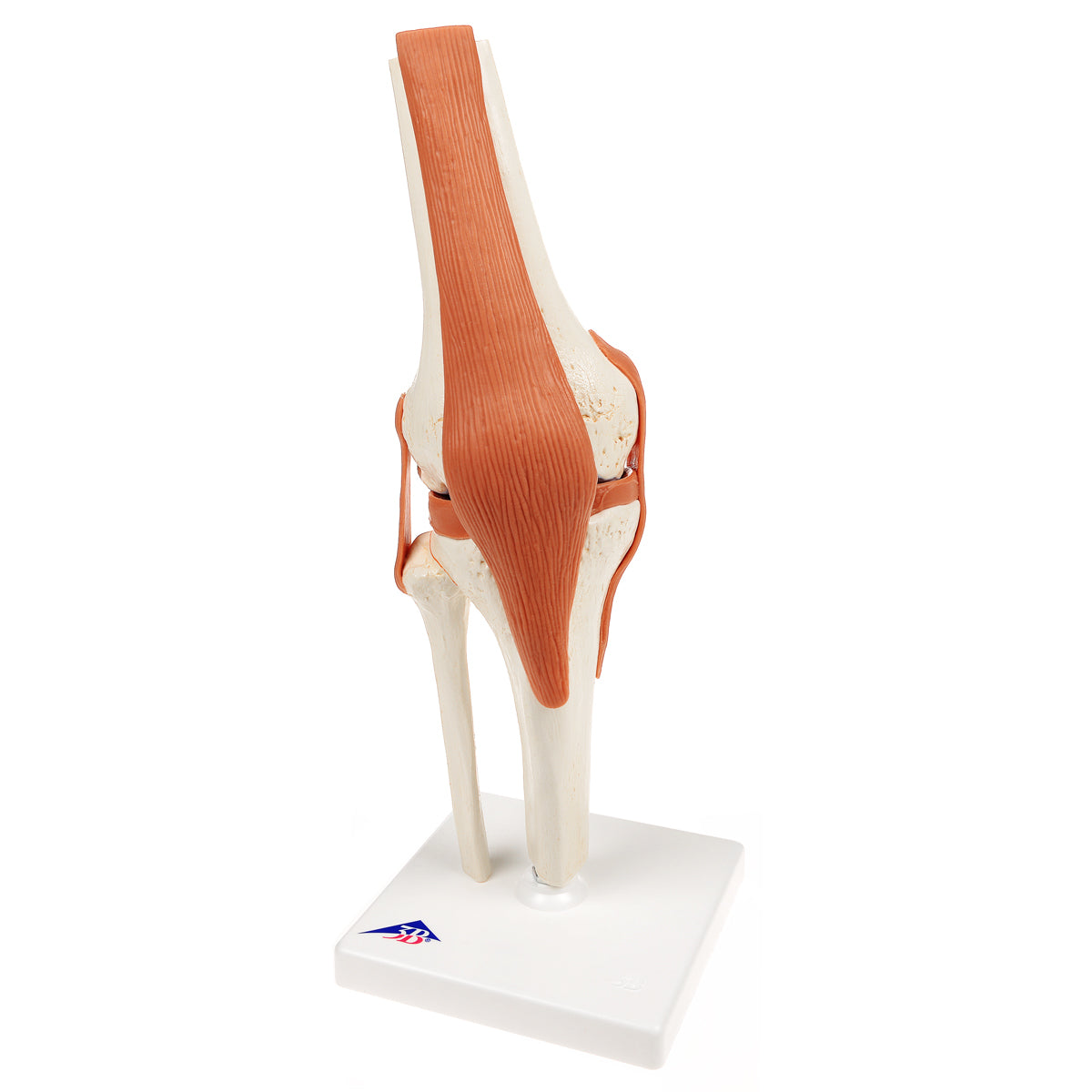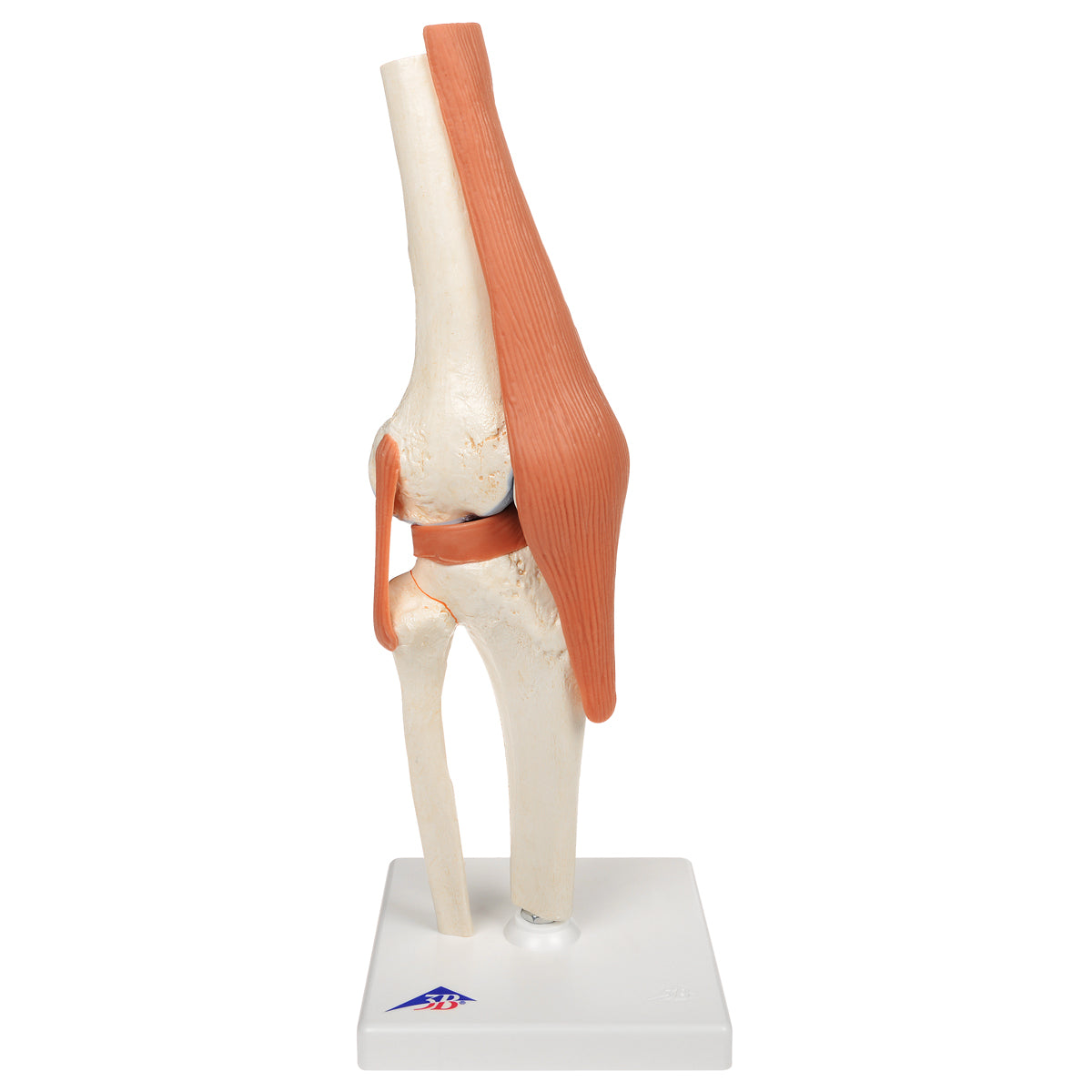SKU:EA1-1000164
Flexible knee model with ligaments and colored joint surfaces
Flexible knee model with ligaments and colored joint surfaces
Low stock: 1 left
Couldn't load pickup availability
Anatomical features
Anatomical features
Anatomically, the knee model shows part of the thigh bone (femur), part of the shin bone (tibia), part of the calf bone (fibula), the kneecap (patella) and both menisci in the knee joint. Furthermore, cartilage-covered joint surfaces are colored in a light blue color.
Wha. brown rubber, the model also shows many of the ligaments that belong to the knee joint.
You see the following:
Corpse. collaterale tibiale (medial lateral ligaments), equal. collaterale fibulare (lateral side ligaments), equal. cruciatum posterius (posterior cruciate ligament), equal. cruciatum anterius (anterior cruciate ligament), equal. meniscofemorale posterius as well as a bit of the quadriceps tendon with the embedding of the patella and the continuation "below" like a corpse. patellae attached to the tibia.
Product flexibility
Product flexibility
In terms of movement, the articulated model is flexible, but compared to other models in the same price range, this model's rubber ligaments are relatively stiff. However, the model can be used to demonstrate movements such as flexion and rotation.
In addition, equals patellae's attachment on the tibia made with a cord
(see the pictures on the left). Therefore, the kneecap can be moved to the side so that the interior of the joint with the cruciate ligament and menisci can be studied.
Clinical features
Clinical features
Clinically, this model is ideal for understanding osteoarthritis of the knee. The model is also ideal for understanding disorders such as ligament injuries (especially injuries to the cruciate ligaments and collateral ligaments), meniscal lesions, mice, patellar luxation (joint slippage in the kneecap), patellar fractures and near-knee fractures.
The model can perhaps also be used to understand disorders such as rheumatoid arthritis and runner's and swimmer's knee.
Share a link to this product

A safe deal
For 19 years I have been at the head of eAnatomi and sold anatomical models and posters to 'almost' everyone who has anything to do with anatomy in Denmark and abroad. When you shop at eAnatomi, you shop with me and I personally guarantee a safe deal.
Christian Birksø
Owner and founder of eAnatomi ApS












